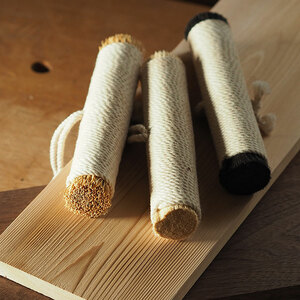Removing Drip Marks in Varnish

Q:
I am applying a good-quality marine varnish (Z Spar) to a mahogany exterior door casing and trim, and a few drip marks showed after the second coat. Sanding between coats using 320-grit sandpaper, along with thinning the varnish by 10% to 15%, seems to have helped a little, but I noticed that the sanding is also thinning the finish around the drip marks. I’m up to my fourth coat and will probably apply a total of five or six coats. Can you suggest a method for removing the drip marks without removing the surrounding varnish and stain?
Wayne, via Ask The Experts, None
A:
One of the best ways to remove drip marks in varnish is to lightly scrape them away with a razor blade. First, be sure the varnish is reasonably set up. To test this, press your thumbnail into the drip. If it’s soft, leave it alone. Once it hardens, use the razor blade the same way you would use a cabinet scraper. Lightly scrape the drip until it starts to flatten out.
Alternatively you can use sandpaper, but keep it as local as possible. The idea is to just cut down the “hill” until it flattens out. I know this is easier said than done. Believe it or not, when sanding away drip marks you want to alternate sanding with the grain and against the grain. When going against the grain, I might just have a small piece of sandpaper on the tip of my index finger or the side of my thumb. After sanding, follow up with a light rub with a gray scotch pad.
When you think the task is complete, wet the area with a bit of water or mineral spirits and assess your work. If you remove stain during this process, apply stain with a cotton swab or a small brush. Tap a little color into the area, count to eight, make a fist, and lightly tap the area with the soft part under your baby finger (like you were pounding your fist). Do this lightly, and the color will be dispersed with no application lines showing.
One more tip that will help complete your project is to wet-sand with 600-grit or 800-grit sandpaper just before your final coat. If you use water for wet sanding, a drop of dish detergent will act as a lubricant. Just be careful — water acts as a very aggressive lubricant. You can cut through the surface very quickly.
For more finishing tips or to ask a question, visit Peter Gedrys in Ask The Experts.
Photo: Matt Berger
Fine Woodworking Recommended Products

Foam Brushes


Odie's Oil






















Log in or create an account to post a comment.
Sign up Log in